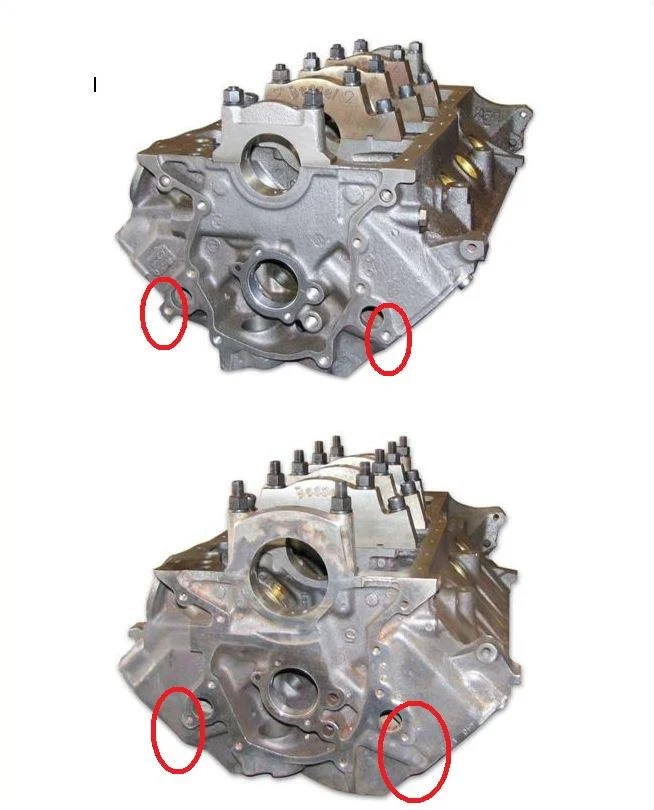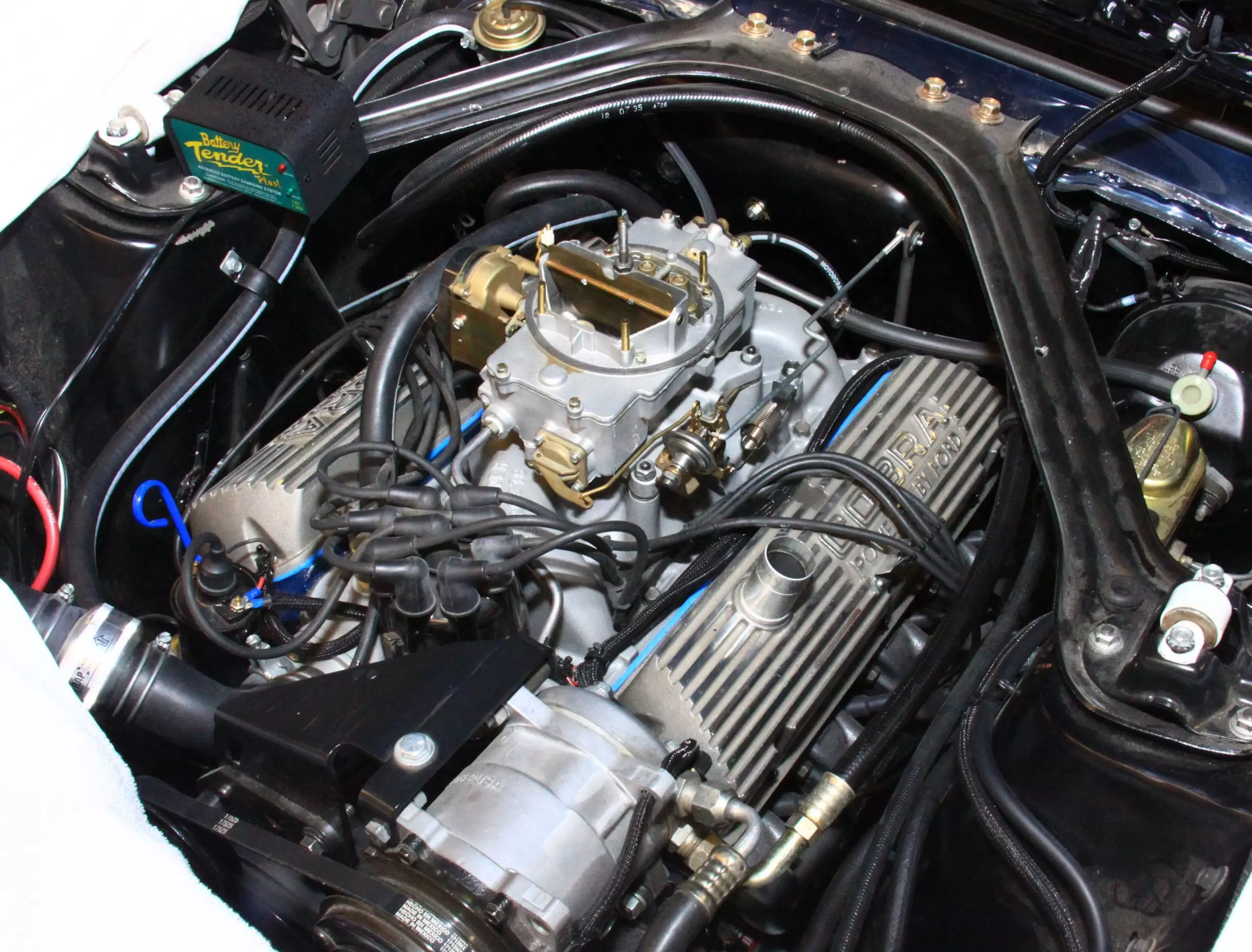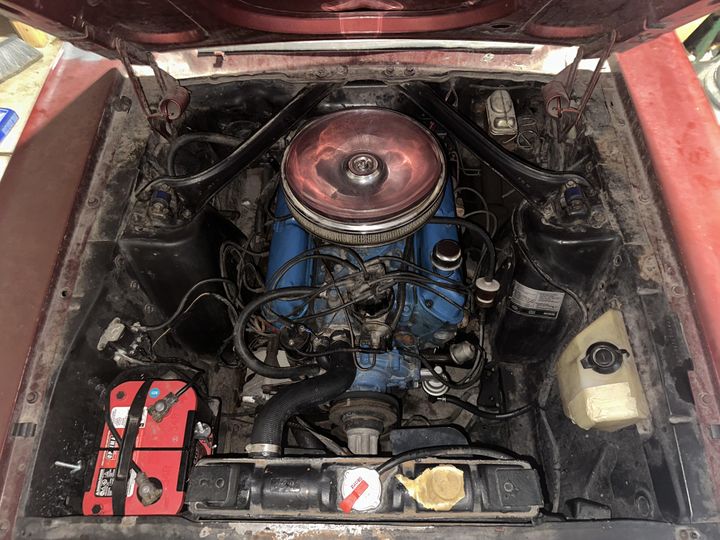


The Ford 289 and 302 cubic inch V8 engines have captivated automotive enthusiasts for decades, igniting debates and fueling passions among muscle car aficionados and hot rodders alike. These two iconic small-block powerplants, while sharing a common architecture, possess distinct characteristics that have cemented their legendary status in the annals of automotive history. In this comprehensive exploration, we'll delve into the nuances that set these engines apart, unraveling their performance prowess, production legacies, and the enduring allure that continues to captivate generations of Ford fans.

The fundamental differences between the 289 and 302 engines lie in their bore and stroke dimensions, which ultimately determine their respective displacements. Here's a breakdown of their key specifications:
| Engine | Bore | Stroke | Displacement |
|---|---|---|---|
| 289 | 4 inches | 2.87 inches | 289 cubic inches (4.7 liters) |
| 302 | 4 inches | 3 inches | 302 cubic inches (4.9 liters) |
These subtle variations in bore and stroke have profound implications for the engines' performance characteristics. The 289's shorter stroke and higher compression ratios, ranging from 9.0:1 to an impressive 10.5:1, endowed it with a high-revving nature and the ability to produce prodigious power outputs. The legendary "Hi-Po" (High Performance) variant, for instance, was rated at a remarkable 271 horsepower – a figure that solidified the 289's reputation as a potent performance engine.
In contrast, the 302 typically featured lower compression ratios, starting at 9.0:1 and decreasing over the years due to increasingly stringent emissions regulations. This design philosophy prioritized low-end torque and daily drivability, making the 302 a more versatile option for everyday use and towing applications.
While the 289 and 302 shared a common architectural foundation, their cylinder head designs diverged in pursuit of distinct performance goals. The 289 Hi-Po heads featured larger valves and unique castings optimized for high-rpm operation, contributing to the engine's free-breathing nature and ability to rev freely.
These specialized cylinder heads, combined with the 289's shorter stroke and higher compression ratios, created an engine that was revered for its ability to produce power at higher RPMs – a trait that made it a popular choice among performance enthusiasts and muscle car aficionados in the early days of the automotive performance era.
The compression ratio, a critical factor in an engine's performance, played a pivotal role in shaping the distinct characters of the 289 and 302. The 289's higher compression ratios, ranging from 9.0:1 to an impressive 10.5:1, enabled it to extract more power from each combustion cycle, resulting in higher power outputs and a more exhilarating driving experience.
Conversely, the 302 typically featured lower compression ratios, starting at 9.0:1 and decreasing over time to comply with evolving emissions regulations. This design philosophy prioritized low-end torque and fuel efficiency, making the 302 a more practical choice for daily driving and towing applications, albeit at the expense of outright performance.
The 289 and 302 engines' performance characteristics were shaped by their unique specifications, with each engine excelling in its own domain.
The 289 was renowned for its ability to rev freely and produce power at higher RPMs, thanks to its shorter stroke and higher compression ratios. This characteristic made it a popular choice for performance applications, particularly in the early days of muscle cars when raw power and exhilarating acceleration were paramount.
One aspect that often set the 289 apart was its distinctive exhaust note. Many enthusiasts describe the 289's sound as more aggressive and throaty compared to the 302, adding to its performance appeal and contributing to its iconic status.
While both engines were capable of impressive performance, the 289 was often favored for its potential for modifications and performance builds. Its compact dimensions and high-revving nature made it a popular choice for hot rodders and racers seeking to extract maximum power from their builds.
In contrast to the 289's high-revving nature, the 302 was designed to deliver more low-end torque and improved drivability. Its longer stroke and lower compression ratios made it better suited for daily driving and towing applications, where consistent low-end power and fuel efficiency were prioritized over outright performance.
While the 302 may not have matched the 289's high-rpm prowess, it still offered respectable performance capabilities, particularly when paired with appropriate gearing and performance modifications. Its versatility and reliability made it a popular choice for a wide range of applications, from street machines to off-road vehicles.
The 289 and 302 engines' legacies are intertwined with the rich history of Ford's iconic small-block V8 family.
Introduced in 1963, the 289 quickly gained a reputation as a potent performance engine, particularly in its High Performance (Hi-Po) variant. It was used in various Ford models, including:
Fairlane
Mustang
Shelby Cobra
The 289's success on the street and track paved the way for its eventual evolution into the 302, as Ford sought to meet new racing regulations that capped engine displacement at events like the 24 Hours of Le Mans.
In 1968, Ford increased the stroke of the 289 to create the 302 cubic inch engine. This change was driven by the need to comply with new racing regulations while maintaining the small-block's performance potential.
The 302 effectively replaced the 289 in Ford's production lineup, although the 289 continued to be produced for a short time to meet existing demand. Over the years, the 302 became a staple in Ford's lineup, powering a wide range of vehicles and earning a reputation for its versatility and reliability.
While the 289 and 302 engines may appear visually similar at first glance, there are a few telltale signs that can help identify them.
One of the most obvious differences between the 289 and 302 engines is the bolt pattern on the engine block where the bellhousing mounts.
| Engine | Bolt Pattern |
|---|---|
| 289 | 5-bolt |
| 302 | 6-bolt |
Additionally, the casting numbers on the engine block and cylinder heads can provide valuable clues as to which engine you're dealing with. These numbers can help determine the specific year and variant of the engine, as well as any unique features or modifications.
It's important to note that as emissions regulations became more stringent over the years, the power outputs of both the 289 and 302 engines decreased. This was a result of changes in compression ratios, camshaft profiles, and other modifications made to comply with evolving environmental standards.
Consequently, later production models of these engines may not exhibit the same performance characteristics as their earlier counterparts, making it essential to consider the specific year and variant when evaluating their potential.
One of the advantages of the 289 and 302 engines is the interchangeability of many aftermarket parts, thanks to their shared architecture.
Due to their similar design, components such as intake manifolds, cylinder heads, and camshafts can often be swapped between the 289 and 302 engines. This flexibility allows for greater customization and performance tuning options, enabling enthusiasts to create unique and powerful builds tailored to their specific needs.
However, it's important to note that while the engine blocks themselves are similar, swapping a 289 block for a 302 (or vice versa) may require additional modifications, such as changes to the bellhousing and other components, to ensure proper fitment and functionality.
In the world of classic Ford enthusiasts, original Hi-Po parts for the 289 engine can command premium prices on the collector's market due to their rarity and performance pedigree. This has led some enthusiasts to seek out more affordable alternatives for building high-performance 289 engines without the need for rare factory components.
By leveraging the interchangeability of aftermarket parts and carefully selecting compatible components, it is possible to build a potent and affordable 289 engine that captures the essence of the original Hi-Po variant, without breaking the bank.
Here are some key considerations for building an affordable high-performance 289:
Aftermarket cylinder heads with larger valves and optimized ports
High-performance camshafts and valvetrain components
Upgraded intake and exhaust systems
Increased compression ratio through pistons or head milling
Ignition system upgrades (distributor, coil, wires)
Fuel system upgrades (carburetor, fuel pump, fuel lines)
Beyond their performance capabilities, the 289 and 302 engines hold a special place in the hearts of automotive enthusiasts, with each engine commanding its own unique appeal and collector's value.
In the world of classic Ford enthusiasts, the 289 Hi-Po engine holds a special place. Due to its rarity and performance pedigree, original Hi-Po parts can command premium prices on the collector's market, making them highly sought-after by those seeking to restore or recreate these iconic engines.
The 289's association with iconic models like the early Mustangs and Shelby Cobras has further contributed to its enduring appeal and desirability among collectors and enthusiasts alike.
While the 302 may not command the same premium prices as its rarer 289 Hi-Po counterpart, it still holds a certain nostalgia factor for many enthusiasts. Its widespread availability and use in a variety of Ford models over the years have made it a familiar and beloved engine among generations of Ford fans.
The 302's versatility and reliability have also contributed to its enduring popularity, making it a practical choice for those seeking to build or restore classic Ford vehicles without breaking the bank.
When it comes to cost and availability, the 289 and 302 engines present different considerations for enthusiasts and builders.
Due to its widespread production and use in a variety of Ford models, the 302 engine generally has an advantage in terms of cost and availability. Cores and parts for the 302 are more readily available and often more affordable than their 289 counterparts, making it a more accessible option for those on a budget.
This accessibility has contributed to the 302's enduring popularity among enthusiasts and builders, as it offers a balance between performance and affordability.
While original Hi-Po parts for the 289 can be costly and difficult to source, it is possible to build a high-performance 289 engine using readily available aftermarket components. By carefully selecting compatible parts and leveraging the interchangeability between the 289 and 302 engines, enthusiasts can create potent and affordable 289 builds without the need for rare factory components.
This approach provides an opportunity to experience the thrill of a well-built 289 engine while staying within a reasonable budget, making it an attractive option for those seeking performance without breaking the bank.
The Ford 289 and 302 engines represent two distinct chapters in the history of the iconic small-block Ford V8, each with its own unique characteristics and enduring appeal. While they share a common architecture, their differences in specifications, performance characteristics, and production history have made them the subject of ongoing discussions and debates among automotive enthusiasts.

Whether you prefer the high-revving nature of the 289 or the low-end torque and versatility of the 302, these engines continue to captivate and inspire generations of Ford fans. From the performance-oriented muscle car enthusiasts to the cost-conscious builders seeking affordable power, the 289 and 302 offer a range of options to suit diverse preferences and budgets.
As the automotive world continues to evolve, these iconic engines remain a testament to Ford's engineering prowess and the enduring passion of enthusiasts who appreciate the rich history and performance heritage they represent. Whether you're restoring a classic, building a hot rod, or simply appreciating the engineering marvels of yesteryear, the 289 and 302 engines will forever hold a special place in the hearts of those who appreciate the art of the internal combustion engine.
The main difference lies in their stroke lengths - the 289 has a 2.87-inch stroke, while the 302 has a 3-inch stroke. Both engines share the same 4-inch bore.
The 289 typically had higher compression ratios ranging from 9.0:1 to 10.5:1, while the 302 featured lower compression ratios, starting at 9.0:1 and decreasing over time.
The 289 Hi-Po heads were optimized for high-rpm operation with larger valves, contributing to its free-revving nature. The 302 heads prioritized low-end torque and drivability.
Many enthusiasts describe the 289's exhaust note as more aggressive and throaty compared to the 302, adding to its performance appeal.
The 289 was often favored for its potential for modifications and performance builds due to its compact dimensions and high-revving nature.
The 302 was better suited for daily driving and towing applications where consistent low-end power and fuel efficiency were prioritized over outright performance.
The bolt pattern on the engine block (5-bolt for 289, 6-bolt for 302) and casting numbers on the block and cylinder heads can help identify each engine.
Many aftermarket parts like intake manifolds, cylinder heads, and camshafts can be swapped between the two engines, allowing for greater customization and performance tuning.
The 289 Hi-Po's rarity, performance pedigree, and association with iconic models like early Mustangs and Shelby Cobras make it highly desirable among collectors.
Due to its widespread production, the 302 engine is more readily available and often more affordable than the rarer 289 counterparts.

Sarah isn't your average gearhead. With a double major in Mechanical Engineering and Automotive Technology, she dived straight into the world of car repair. After 15 years of turning wrenches at dealerships and independent shops, Sarah joined MICDOT to share her expertise and passion for making cars run like new. Her in-depth knowledge and knack for explaining complex issues in simple terms make her a valuable asset to our team.












